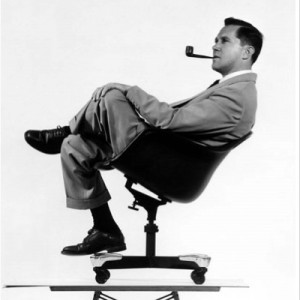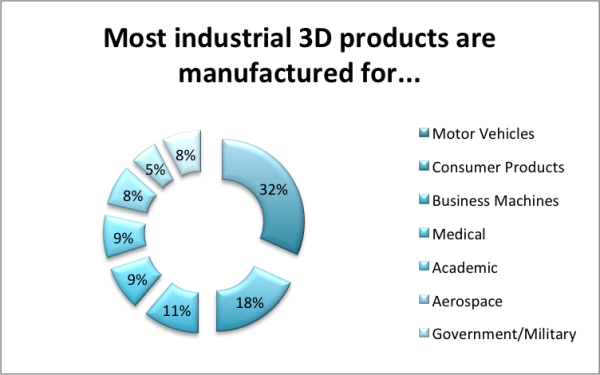Take a moment to reflect on how many times a day you encounter the following: pencils and pens, eating utensils, drinking glasses, doorknobs, phones and more. Have you ever questioned the design of any of these? Few people would challenge the design due to their prevalence. Why question the design of a fork, when it’s done its job for the majority? Truth is, many cornerstone objects remain unusable for certain individuals, which brings us to further inquiries: What is design? And what does it have to do with accessibility?
To a majority of individuals, design may be defined as a pattern, a drawing, or something aesthetically pleasing; but in the world of accessibility, design is so much more. Steve Jobs stated: “Most people make the mistake of thinking design is what it looks like. People think it’s the veneer–that the designers are handed this box and told, ‘Make it look good!’ That’s not what we think design is. It’s not just what it looks like and feels like. Design is how it works.”
 The designer of the iconic lounge chair, Charles Eames, stated how design “is a plan for arranging elements in such a way as to best accomplish a particular purpose.”
The designer of the iconic lounge chair, Charles Eames, stated how design “is a plan for arranging elements in such a way as to best accomplish a particular purpose.”
Awareness plays a large role in design. Though the world has terrifically advanced in the area of accessibility, many designers lack awareness and still create several cornerstone objects that remain inaccessible to certain individuals.
Prior to getting into logistics, note this disclaimer: this article isn’t stating how inaccessible the world’s products are, it is neither an insult nor a biased opinion. No doubt many would quickly argue the advances made in accessibility in recent years, I myself included. Though I am a 25-year-old college graduate, I must admit I still get terrifically excited about new assistive technologies and other products that benefit those with disabilities. I suppose you could state my reaction to new technologies is comparable to a child in a toy store with widened, eager eyes. And yes, I am guilty of making this face quite frequently accompanied by the exclamatory statements, “Do you see this?! How awesome is this?!”
I was diagnosed with muscular dystrophy at the age of 4, so I dare state from 21 years of personal experience that products specifically designed for individuals with disabilities can be bland, expensive and offer limited functionality. Many items may require further adaptions to become accessible to certain users; moreover, what works for one individual won’t necessarily work for the next. Technology has opened many doors for those with disabilities, helping them obtain independence, productivity and more–and it continues to offer more and more promises  each day. When I initially heard of 3D printing, I was fascinated. But once I read more about it and learned its potential for individuals with disabilities, well, imagine a child’s expression of amazement: “you can make what!?”
each day. When I initially heard of 3D printing, I was fascinated. But once I read more about it and learned its potential for individuals with disabilities, well, imagine a child’s expression of amazement: “you can make what!?”
Denise Stephens, who was diagnosed with relapsing remitting multiple sclerosis (RRMS) at the age of 24, has faced a slew of challenges trying to find the right equipment for her. She states “…people who might not have a design background as making things look pretty. So they won’t necessarily think about design being how a product works, how you interact with the product… because design is more than just how something looks,” she says. Of course, not everyone cares about how a product is designed as long as it performs the necessary functions. In the end, Stephens believes it’s about choice–letting people be involved as much as they want to be and 3D printing makes this possible.
How does 3D printing work?
I have personally never worked with a 3D printer, so I asked someone who has worked with one directly. Graduate Architect Daniel Potash has worked with 3D printers for over 8 years and took time to walk me through the process behind this fascinating technology. Potash’s degree in architecture has provided him with thorough understanding of design, and his knowledge of the 3D printer is exceptional. Over the years, he has successfully printed models of design projects, scale column capitals, Segways, cameras, and even a fully functional lock–complete with passcode!
1. To begin, an individual constructs his or her design using CAD, or computer-aided design.
2. The file is then prepared for the 3D printer–it may be necessary to alter the design according to the specific limitations of the machine. (NOTE: each machine is different, and oftentimes machines have different software.)
3. Prepare the machine: clean, load material (unique to machine; some use sugar, plastic, metal, glass, powder, etc.)
4. After the machine is prepared, send file to printer. Many factors influence how long the printing will take–sometimes the printer will finish in an hour and sometimes it can take days to print!
So in short, the process of 3D printing involves creating a design, choosing your desired materials and printing.
3D printing is used to manufacture several different products in many areas:

So, in regards to individuals with disabilities, what does 3D printing have to offer?
Thus far, many individuals have printed a myriad of products, many tailor-made to best accommodate each individual. A few examples include hearing aids, prosthetic jaws, limb prostheses, livers, kidneys and more. Equipment examples include eating utensils, straw holders, pen-holding devices, wheelchair cup holders, portable wheelchair ramps and much, much more!
